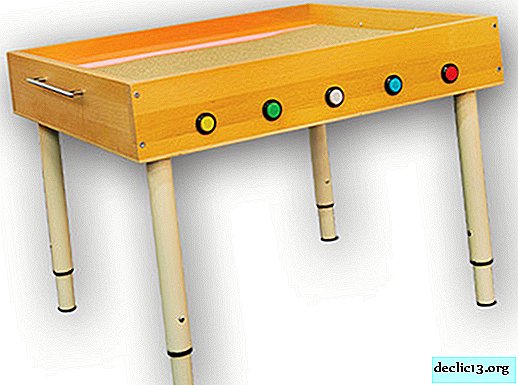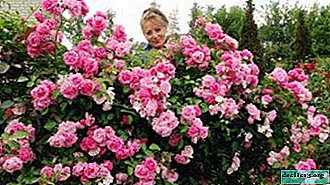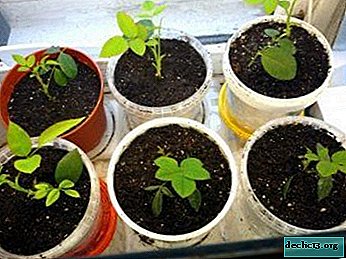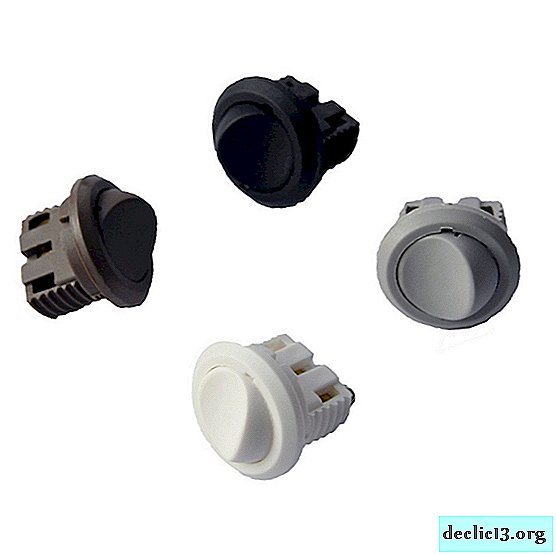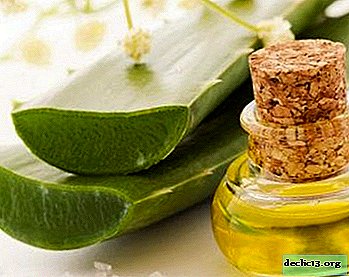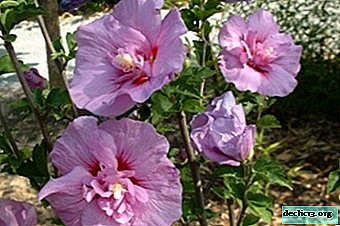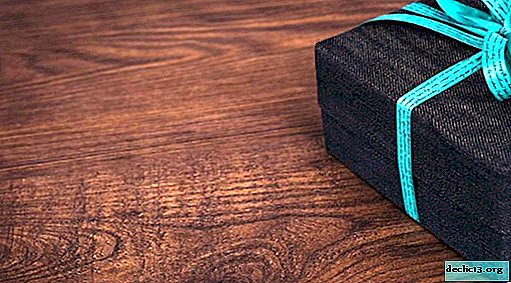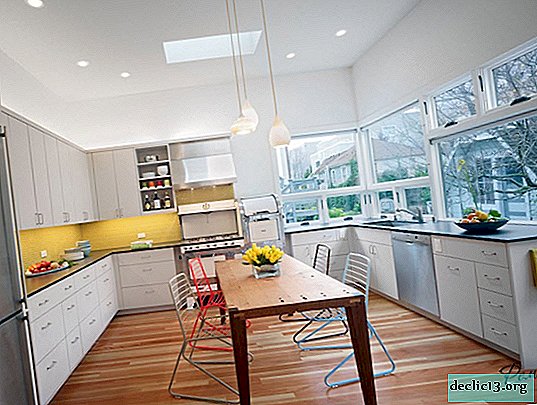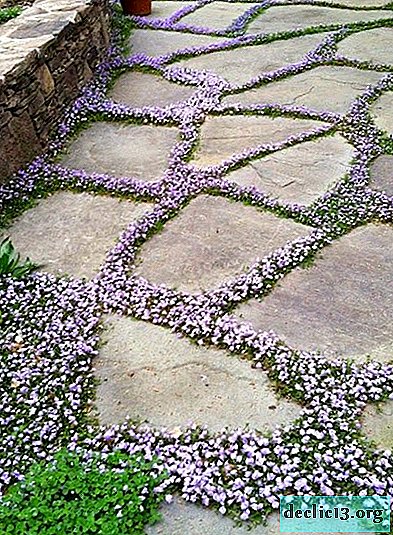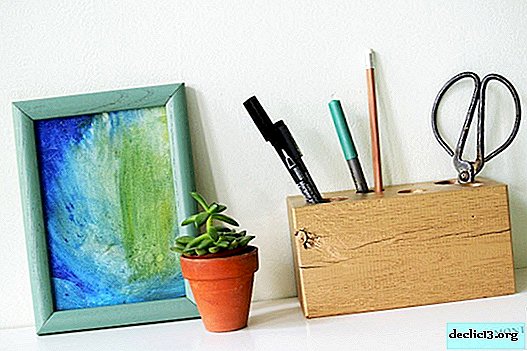We answer a popular question: is it possible to plant an orchid in ordinary land?
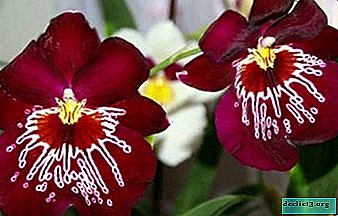
To date, the fact that orchids do not grow in the earth has become well known. But on the forums of flower growers periodically there is information that "my orchid grows and blooms in the ground and feels great!". So who is right, and is it possible to grow this amazing plant in ordinary soil?
From the article you will learn whether orchids can grow in ordinary land, what varieties of it are suitable for this, how best to transfer the flower to the ground.
Is landing permitted?
Speaking about orchids and their planting in the ground, it is first necessary to decide what kind of orchid is meant. Conventionally, they can be divided into three large groups:
- Epiphytes - really do not need land, but grow on trees. Contrary to popular belief, epiphytic orchids are not parasites, they take the necessary moisture and nutrients from the air and rainwater.
- Lithophytes - grow in conditions that are unthinkable at first glance: on bare stones. This is a smaller part of orchids.
- Ground orchids - make up the average largest group. Unlike the first two, they have underground roots or tubers. As a rule, such varieties grow in temperate zones and are not as beautiful as exotic tropical beauties. These include Bletilla striata, Pleione, Orchis and Cypripedium.
So, before you plant an orchid in the ground or in the bark, you need to find out which group it belongs to. If the orchid is terrestrial, it will grow well in black soil. But with epiphytes things are not so rosy.
Why is this contraindicated for most plants?
 Epiphytic orchids are planted exclusively in the substrate, the earth will quickly destroy them. From what? It's all about the specifics of their roots. The roots of an epiphytic orchid are the most important organ for it, performing such functions:
Epiphytic orchids are planted exclusively in the substrate, the earth will quickly destroy them. From what? It's all about the specifics of their roots. The roots of an epiphytic orchid are the most important organ for it, performing such functions:
- Attaches the orchid to the substrate, which allows it to maintain an upright position and hold in place.
- Actively, along with leaves, participates in photosynthesis. Some species absorb sunlight mainly through the roots - they need to be planted in transparent pots.
- Absorb moisture and nutrients from the air and (a little) from the bark of plants) - ensuring the vital activity of the plant.
In order to fully perform these functions, orchid roots are covered with a special substance - velamen - a spongy hygroscopic fabric. Thanks to it, the roots store moisture, giving it to the plant as needed. But they themselves must remain dry. Imagine why this is so, imagine a sponge. It easily absorbs and gives off moisture.
But what will happen if you leave it wet for a long time and without air? That's right, the sponge is moldy. The same thing happens with the delicate roots of orchids caught in ordinary soil. Due to its characteristics (it is dense in structure, it conducts moisture well and poorly - air), it does not dry out for a long time, and the roots simply choke without air. If you don’t urgently transplant the plant, the roots will begin to rot, and then the plant will completely die.
Important: despite the importance of the roots, an orchid with rotten roots is subject to resuscitation. To do this, create greenhouse conditions for it (by placing it in a pot without a substrate, but with water and under a film).How will epiphytic varieties affect their placement in ordinary chernozem?
Large-scale, and, alas, an unfortunate experiment in growing orchids in ordinary land was made during their first delivery to Europe. Gardeners, fascinated by the beauty of tropical plants, were ready to pay fabulous money for them and offered them the best: rich fat black soil. But the plants for some reason massively perished ...
If you try to plant varieties that are not intended for this in ordinary black soil, the plant will not last long. For example:
 Phalaenopsis - The most common at home orchids. They need excellent aeration, they die in pots with a densely packed bark. Even if you simply sprinkle their roots with ordinary soil, then the plant will soon suffocate. At the same time, phalaenopsis is an unpretentious flower that can exist for a long time in uncomfortable conditions. That is why you can find examples when it grows and even blooms in a pot of earth.
Phalaenopsis - The most common at home orchids. They need excellent aeration, they die in pots with a densely packed bark. Even if you simply sprinkle their roots with ordinary soil, then the plant will soon suffocate. At the same time, phalaenopsis is an unpretentious flower that can exist for a long time in uncomfortable conditions. That is why you can find examples when it grows and even blooms in a pot of earth.But such a miracle will not last long: the roots will slowly decay and the plant will die. By the way, if phalaenopsis bloomed in the earth - it is most likely agony, because the flowering of orchids sometimes occurs as a reaction to adverse conditions.
- Wanda. This plant is very moody and is not suitable for a beginner grower. She so requires constant access to air that it best of all grows in pots without any substrate, with a bare root system. If it enters the ground, it will very quickly lose its leaves, and then die. Wanda cannot bloom in the land.
- Ascocenda. Like Wanda, he loves air circulation, needs a plastic pot with a minimum of substrate. If you plant it in black soil, then soon you will see yellowing of the leaves, then they will begin to fall off. If you dig it up at this time, you can see the change in the roots: without access to air, they will turn yellow and half rot. Only an urgent transplant can save the plant.
What species grow in the soil?
If you bought an orchid, and doubt what to plant it in, you need to find out what kind of orchid it is. If the plant comes from the Himalayas, Australia or Southeast Asia, then it may well need land. It is these orchids that are actively selected today, and the result is hybrids adapted to living conditions and to the soil. For example:
- Hemaria (Haemaria);
- Macodes (Macodes);
- Anectochilus (Anoectochilus);
- Goodyera.
There are also wild orchids that grow in Ukraine, Russia and Belarus, and the earth is a habitual substrate for them. It:
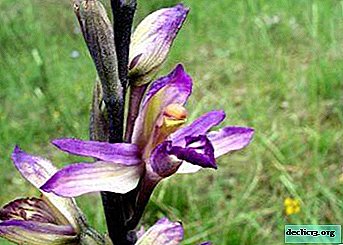 Limodorum;
Limodorum;- Orchis;
- Office
- Lyubka;
- Anacamptis;
- Pollen head
- Palmokorennik;
- Venus slipper and others.
Most often, as an orchid growing in the ground, cymbidium is sold. He needs a heavy soil that can retain moisture near the roots, and frequent watering. Able to live even on ordinary chernozem, although more often bark and leafy earth (humus) are included in the composition of the soil optimal for cymbidium.
Is it necessary to dilute the soil?
The composition of the purchased primers for orchids sometimes includes land. You can really add it if you have a variety that loves high humidity. But by no means an ordinary black soil! You can interfere with the so-called sheet land: this is the soil that is obtained after the decomposition of leaves in the forest. She is very rich, and the plant grows well in it. You can dig it up yourself, then sift it carefully and add according to the composition of the mixture that you make (for more information about the composition of the soil for orchids, see here, in more detail about what is best, make at home or buy a ready-made soil composition, see this material ) But the percentage of land content should not exceed 40%.
For example, in a mixture of bark, earth, sand and coal, the Ludzia orchid grows well (a variety with huge dark green leaves and small, pearl-like flowers).
The choice of the finished mixture
Acquiring the terrestrial appearance of an orchid, you will encounter a problem: there are almost no ready-made land mixtures for them. The maximum that you can offer in the store is a substrate for violets. But it consists of almost one peat and is poorly suited for orchids.
You have to do the mixture yourself. All components for the future substrate can be divided into 3 groups:
- Land base (leaf, turf or coniferous land, peat).
- Loosening additives (not fully rotted leaves, moss, charcoal, bark or polystyrene).
- Organic fertilizers (clay and dry mullein).
How to transfer a flower?
- To start, determine which orchid you have. All terrestrial varieties can be divided into 2 types:
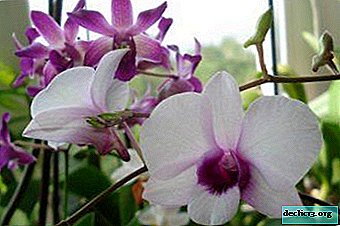 Deciduous - requiring an annual transplant. During the dry season, both leaves and roots die off. Land for them needs the most light and at the same time nutritious. These include: calendars, catazetums, pleonas, bleths, bleths. Ideal mixture: leafy land, soddy ground, humus, red peat, fern roots, river sand (take in the ratio 2/2/2/1/2/1).
Deciduous - requiring an annual transplant. During the dry season, both leaves and roots die off. Land for them needs the most light and at the same time nutritious. These include: calendars, catazetums, pleonas, bleths, bleths. Ideal mixture: leafy land, soddy ground, humus, red peat, fern roots, river sand (take in the ratio 2/2/2/1/2/1).- Evergreens that do not need an annual transplant. They are transplanted as the substrate decomposes or roots creep over the edge of the pot. These include cymbidiums, green-leafed species of Paphiopedilums, faeces, many types of frampediums, collections. Ideal mixture: fibrous turfy soil, rotted leaves, fern roots, sphagnum, river sand (ratio 3/1/2/1/1).
- Further select pot. It can be either plastic or ceramic, but drainage holes are still needed. A high layer of drainage is laid at the bottom (crushed gravel, broken shards or pieces of polystyrene foam - at least 3-4 cm).
- Then take the orchid from the previous pot (it’s best to break or cut it - so the roots will be less damaged), inspect and rinse the roots. To see if the root is alive, gently squeeze it with your finger. Living roots must be resilient.
- Then orchid is set in a pot and filled with prepared soil. Do not immerse it in the mixture too deeply - the roots must breathe. The earth mixture does not need to be rammed, it is already caking with time. You can water the orchid after transplanting no earlier than 3 days later - so you will avoid root rot.
If everything is done correctly: the orchid variety is correctly identified, it is really terrestrial, the soil is well mixed and the transplantation went without injuries, then the plant will certainly be accepted. And soon your orchid, growing in the ground, will thank you with a magnificent bloom!

 Phalaenopsis - The most common at home orchids. They need excellent aeration, they die in pots with a densely packed bark. Even if you simply sprinkle their roots with ordinary soil, then the plant will soon suffocate. At the same time, phalaenopsis is an unpretentious flower that can exist for a long time in uncomfortable conditions. That is why you can find examples when it grows and even blooms in a pot of earth.
Phalaenopsis - The most common at home orchids. They need excellent aeration, they die in pots with a densely packed bark. Even if you simply sprinkle their roots with ordinary soil, then the plant will soon suffocate. At the same time, phalaenopsis is an unpretentious flower that can exist for a long time in uncomfortable conditions. That is why you can find examples when it grows and even blooms in a pot of earth. Limodorum;
Limodorum; Deciduous - requiring an annual transplant. During the dry season, both leaves and roots die off. Land for them needs the most light and at the same time nutritious. These include: calendars, catazetums, pleonas, bleths, bleths. Ideal mixture: leafy land, soddy ground, humus, red peat, fern roots, river sand (take in the ratio 2/2/2/1/2/1).
Deciduous - requiring an annual transplant. During the dry season, both leaves and roots die off. Land for them needs the most light and at the same time nutritious. These include: calendars, catazetums, pleonas, bleths, bleths. Ideal mixture: leafy land, soddy ground, humus, red peat, fern roots, river sand (take in the ratio 2/2/2/1/2/1).